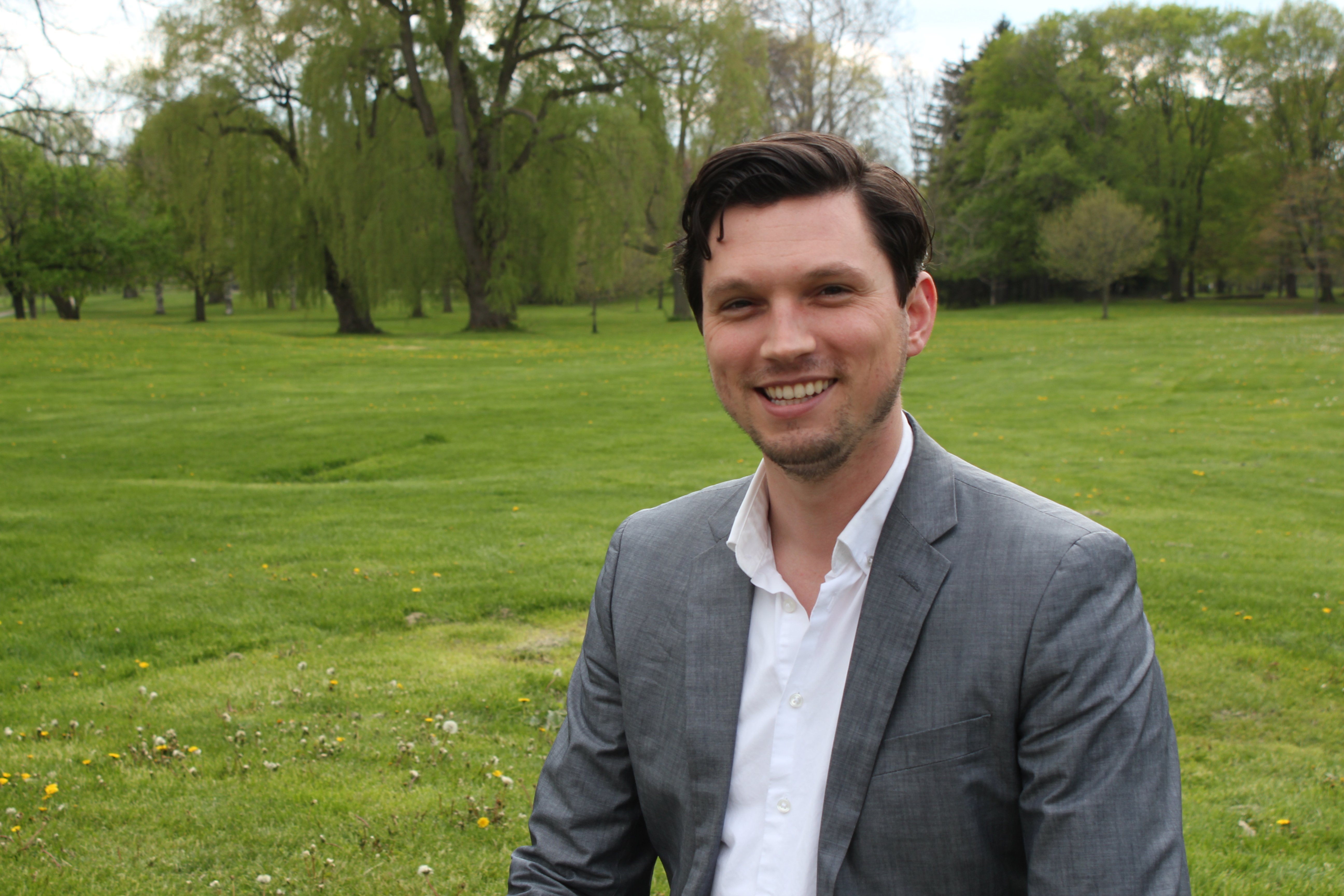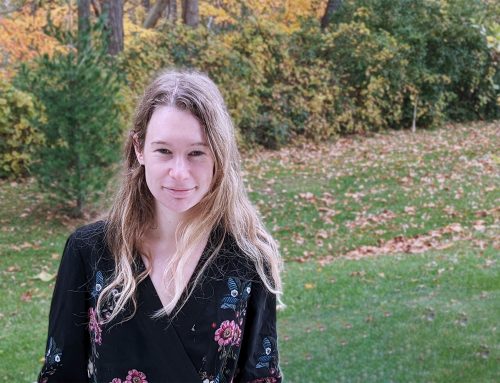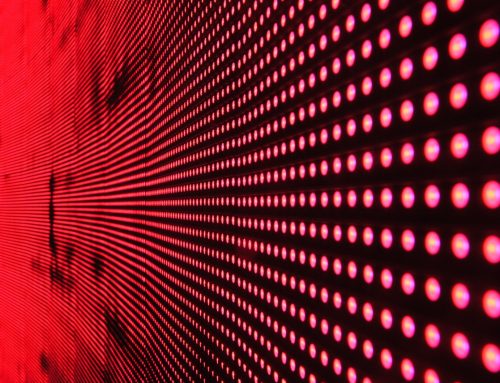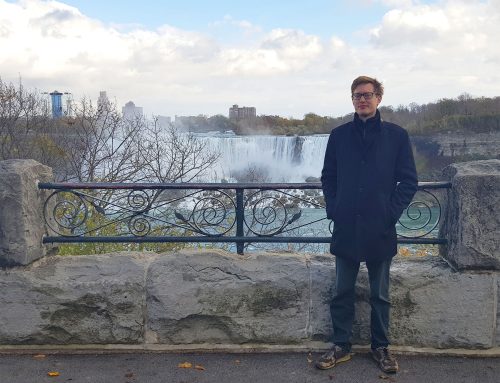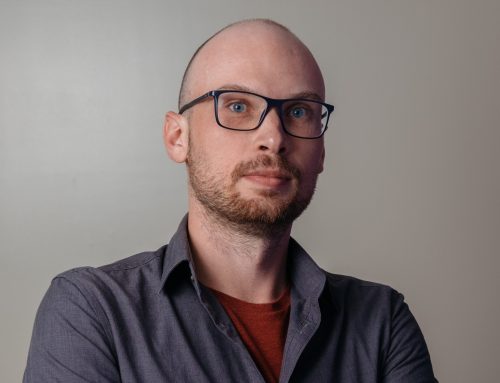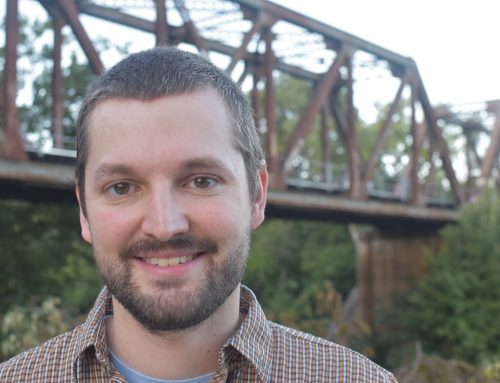Lucas Dunlap is a postdoctoral research fellow at the Rotman Institute of Philosophy in London, Ontario. He completed his doctorate in 2015 at the University of Maryland College Park. His research addresses fundamental questions in the philosophy of science and in the philosophy of physics. Specifically, he studies the foundations of quantum mechanics, Quantum Information Theory, and the metaphysical presuppositions underlying models of the quantum world.
Amy Wuest: While many academics only begin to develop their area of expertise after they enter a PhD program, you seem to have found your interest early in your academic career, given that your undergraduate thesis is on quantum ontology. What first piqued your interest in this subject?
Lucas Dunlap: I took an undergraduate philosophy of science class with Rebecca Newberger Goldstein at Trinity College when she was visiting there. For some reason, the questions we addressed in that class (especially questions about the epistemic limits of science and scientific realism) really engaged me. The final unit of that course was focused on questions from the philosophy of physics. I had previously read a little about the conflict between quantum mechanics and general relativity, so I was particularly interested in that material. But I believe we were also introduced to the quantum measurement problem in that class. I pursued those questions on my own over the next two years, and worked with Professor Goldstein on a senior honors thesis focused on the philosophy of quantum mechanics and relativity. Then after completing my undergrad degree, I did a two-year philosophy of physics master’s program at Columbia University, studying with David Albert. So by the time I got into Maryland’s PhD program, I had already established a significant research interest in the foundations of physics.
AW: Your current research addresses the intersection of metaphysics and Quantum Information theory. Can you explain these fields of research and how the results from this work might inform other research projects in the philosophy of science?
LD: Quantum Information is an approach to the foundations of quantum theory that is based on the idea that the physical properties of quantum systems, and the interactions between them, ought to be reconceptualized in terms of their information-carrying and -processing capabilities.
Much earlier, beginning in the late 1940s, a similar shift happened in classical physics. Claude Shannon’s landmark paper on the mathematical theory of communication led to the development of the idea of “physical information,” which is an abstract quantity, whose exact implementation in a physical system is irrelevant. Certain new kinds of questions could be asked in this framework about the properties of physical systems in general. This way of thinking about physics led to the development of computer science and cryptography, but also, perhaps less obviously, the framework has been useful in studying some thermodynamic systems, including black holes, and has been used in the study of chronology violation (e.g. time traveling physical systems, or backward causation).
Quantum Information is a similar move. Many theorists and experimentalists have found questions about the information-theoretic properties of quantum systems to be productive areas of research. The question about why the world is quantum mechanical is recast in this framework as “Why can physical systems carry and process quantum information rather than classical information”.
Just as the “bit” is the unit of information in classical Information Theory, the “qubit” is the basic unit of quantum information. Quantum systems allow us to encode more complex information in their physical degrees of freedom (for example, the polarization state of a photon) than classical systems do. A classical bit is a two-state system—yes or no, 0 or 1; think of a light switch being up or down. We can use many of these systems in conjunction to encode information, and that information can be transmitted by sending the physical systems from one place to another (this is how your computer works—the classical bits are encoded in either a high voltage or low voltage traveling through your CPU).
One of the incredible things about quantum mechanics is that the kinds of things we would expect to be two-state systems—like whether a photon is linearly polarized in the horizontal direction or the vertical direction actually admit of superpositions of the two states. That is to say, properties that we would consider to be mutually exclusive according to our classical intuitions, actually aren’t mutually exclusive in quantum mechanics. Figuring out exactly how to explain quantum superpositions in words is challenging, and is mostly done badly. For example, people often say that a photon in a superposition of the two polarizations states is somehow “in both at once.” But this can’t be true, since we can do simple experiments ruling out that it is definitely in either state. It’s best to think of a superposition as a wholly new quantum state of a physical system.
The last, possibly most important, feature of quantum mechanics that’s relevant for quantum information is that measurements somehow disrupt the quantum character of the physical system, and the outcomes of measurements are always classical bits. That is, a system that is in a superposition of the two polarization states, when measured will still just register as being one or the other of the classically mutually exclusive states. What quantum mechanics tells us, though, is that the probabilities associated with these two outcomes depend on the exact superposed state your qubit is in.
So the trick with quantum information is to figure out ways to encode more information into physical systems than would be allowed classically, given that much of the complex quantum character is lost at the measurement stage. Or, alternatively, to use qubits to carry out computational tasks (via the quantum mechanical interactions of systems in superpositions) in many fewer steps than would be allowed by classical Information Theory.
My main philosophical interest is in trying to determine what this approach can tell us about the structure of reality. It’s clear that quantum information is a majorly fruitful research program. But exactly what it tells us about the world is less clear. What does it mean that we live in a world in which a quantum computer is possible? Does Quantum Information offer us any resources for answering questions like this that the other approaches to the foundations of quantum theory do not?
AW: What is the measurement problem in quantum theory and how does quantum information theory attempt to resolve this problem?
LD: The quantum measurement problem is a puzzle about how quantum mechanics is standardly understood to hang together. If you pick up a quantum mechanics textbook, you’ll likely find reference to a measurement as causing an instantaneous, discontinuous change in the state of the quantum system. When left alone, a quantum system evolves according to the Schrödinger equation. But when a measurement takes place, Schrödinger’s equation ceases to apply, and the state of the system changes instantaneously. This is called the “collapse of the wavefunction” or the “reduction of the wavepacket.”
The problem is that the measurement itself is a physical process, and should therefore be able to be modeled in the theory. But when you try to apply the Schrödinger equation to the state of your measuring device, to generate a quantum mechanical prediction for what happens when it interacts with the system it’s measuring, you get a very different prediction. If the system being measured is in a superposition, Schrödinger’s equation says that the measuring device itself should also enter into a superposition. But we never see macroscopic superpositions.
Standard quantum mechanics solves this by treating measurements as special kinds of interactions that have to be modeled “outside” the theory. That’s why people sometimes talk about the “quantum world” being the realm of the very tiny, and the “classical world” as being the macroscopic world of our everyday experience. The problem, though, is that this distinction cannot be drawn within quantum theory. The theory does not give us the resources to say which interactions count as measurements, and which do not.
The final thing to keep in mind is that quantum mechanics is supposed to be a fundamental theory about the structure of matter. It’s supposed to apply to everything all of the time. All material objects, at all scales, are subject to the laws of quantum mechanics. So this causes a problem. If quantum mechanics is indeed fundamental, then how could it be that measurements can only be modeled “outside” the theory? Shouldn’t quantum mechanics apply to measuring devices as well? How do we square this with the idea that the concept of a measurement (which is seemingly necessary to ensure that the theory doesn’t predict macroscopic superpositions) cannot be formulated in the theory itself?
The Measurement Problem is a way of talking about this set of issues. There are many proposed solutions, and they fall into roughly three camps. First, we might conclude from this discussion that quantum mechanics is not true. That is, like so many other past contenders for the status of fundamental theories, it is only approximately right, and will someday be supplanted by a more accurate, more fundamental theory. This is almost certainly true of quantum mechanics, but interestingly, quantum field theory, which is a more fundamental class of quantum theories, also has a version of the measurement problem. The second camp consists of the answers to the measurement problem that are based on the assumption that quantum mechanics is true but not complete. These theories supplement quantum mechanics (usually with a well-defined ontology that is itself never in a superposition). The most well-known example here is Bohm’s theory. The third camp actually embraces the idea that there are macroscopic superpositions. In fact, on this interpretation, the fact that measurements have definite outcomes (i.e. that the wavefunction collapses) is an illusion. This is the Everett Interpretation, sometimes called the “Many Worlds Interpretation.”
This project of trying to solve the measurement problem through attempting to better understand the way in which quantum mechanics models reality (either approximately, incompletely, or exactly) is often referred to as the attempt to “interpret” quantum theory.
AW: How can quantum information theory be used to interpret quantum theory? Why is doing so important?
LD: That’s a question that I’ve thought about a lot. One of the main issues that has driven my research is to ask whether the interesting and fruitful approach to understanding quantum mechanics at a fundamental level represented by Quantum Information can offer us any resources that can help solve the major interpretational puzzles of quantum mechanics, especially the measurement problem.
One of the challenges inherent in this project comes from the fact that in Quantum Information, the question of the ontology of the quantum world is not of fundamental importance (like how the implementation of information is not physically relevant in classical Information theory). Most of the other interpretations of quantum theory conceive of a suitable answer to the measurement problem as being formulable only in terms of the underlying ontology of the quantum world.
AW: Throughout your work and in a recent paper—namely, “The Information-Theoretic Interpretation of Quantum Mechanics & Ontic Structural Realism”—you discuss Bub and Pitowsky’s Information-Theoretic Interpretation of quantum mechanics. Can you explain this view and how it informs your research?
LD: Bub and Pitowsky have offered the most complete version of an interpretation of quantum theory based on the principles of Quantum Information theory. They claim to have a fully fleshed out way of understanding how quantum mechanics represents reality in a fundamental way that can solve the measurement problem. It’s an ambitious and impressive position, and the series of papers in which it is presented is definitely worth reading for anyone interested in these issues.
However, I had a hard time understanding how this view solves the Measurement Problem, given what I said above about their commitment to the non-fundamentality of the question of the ontology of the quantum world. Their view seems to be based on the idea that what quantum mechanics is accurately representing about reality is a structure of possible events, and the allowed correlations between them.
This seemed to be a natural fit with the Ontic Structural Realism (OSR) view, where the world is fundamentally constituted out of just these kinds of structures. So in that paper I was attempting to work out what a combined view would look like. The question of the ontology of the world (which would allay my concerns about the suitability of the view for addressing the Measurement Problem) would be taken care of by OSR. And the exact form of the structure of relations on which OSR claims the phenomenal world supervenes would be specified by the Information-Theoretic Interpretation of quantum mechanics.
AW: You and three other philosophers of science—Dr. Michael Cuffaro, Professor Wayne Myrvold, and Professor Markus Müller—were awarded a grant from the Social Sciences and Humanities Research Council for the workshop, Information Theoretic Interpretations of Quantum Mechanics. What will be discussed at this workshop and what do you hope to accomplish during it?
LD: The workshop is structured around just these questions. It was inspired by Jeffrey Bub’s new book Bananaworld: Quantum Mechanics for Primates in which he gives a clear and approachable presentation of the Information-Theoretic Interpretation of Quantum Mechanics. All of the interesting features of Quantum Information are described in terms of bananas: how you peel them and how they taste. This is to emphasize the fact that what the theory is really about is the correlations that happen between measurement outcomes, rather than the physical systems by which the quantum information is actually being carried.
After typing that up, I’ve come to realize that my focus on the underlying ontology of the information-theoretic interpretation of quantum mechanics has been misplaced. The answer has been staring me in the face all along. It’s bananas all the way down.
This is the fifth post in our our weekly series of interviews with the Rotman Institute’s postdoctoral fellows. Last week’s interview with Fermín Fulda can be found here. Catherine Stinson’s interview can be found here, Tommaso Bruni’s interview can be found here, and Alida Liberman’s interview can be found here.

